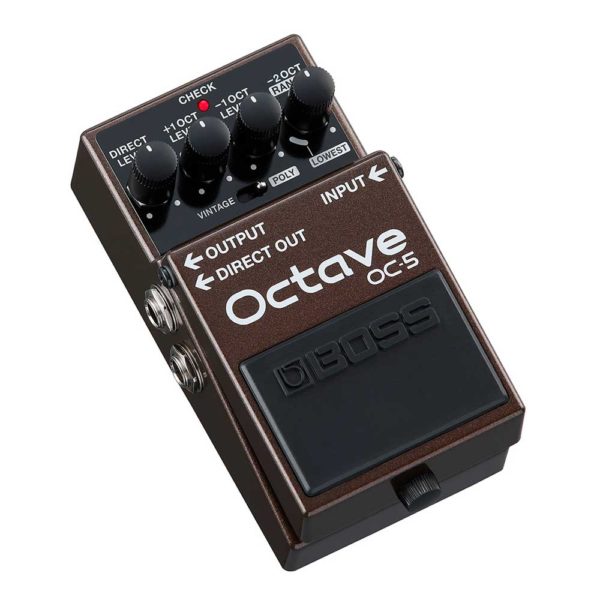

The slot that the Meris Hedra is most commonly on is my defacto / default Pitch-Shift / Octave style effects position - and I’ve decided actually to move that before the SY-1 Synth - so the SY-1 moves to slot #3 and the new OC-5 goes in on slot #2 (as illustrated further below). I’ve always liked octave pedals - particularly in combination with Synth and Filter pedals - so I will be re-jigging my pedal-chain once more to properly accommodate the OC-5. There have been a few interesting sub octave pedals released recently that specialise in just that single function - while here you can apply it as and extra dimension on top of everything else.Īnd for those who still loved the analog warmth of the original Monophonic OC-2 - the OC-5 delivers the very best digital replica take on that - where the engineers were really able to put the manufacturing delays to good use - and really hone the authenticity of the VINTAGE mode. Also by using the RANGE function of the 4th Knob you can do those kind of cool walking basslines - where you only apply the effect to the lower / lowest strings and allow the rest to pass through unaffected.
BOSS OCTAVE PLUS
It just made total sense to release this into the mainline range at the more affordable price - which will be £129/€139 and equivalent and available at most dealers fairly imminently.įor me this is the perfect marriage of form factor and function here - and with 3 octave voicings plus the Dry signal - you have a very formidable tool for thickening and deepening your sound.

Boss are particularly proud of how fast and consistent they’ve been able to make their tracking here - obviously benefitting from significant technological advances in processing power and speed / resolution accrued in the intervening time since the introduction of the OC-3 back in 2003. There are obvious Waza Craft overtones here - and for a period this was under consideration as a Waza-style project, yet that would have entailed pure analog Made-in-Japan construction with much higher costs - and actually less accurate tracking and more inconsistent octave playback for the more advanced functions. And a rather more elegant and refined function on the -2 OCT Range control. Gone also is the slightly inherent complexity of the Dual-Multi-Mode control of the OC-3 - and instead we have a Waza Craft style : Vintage (OC-2) / Poly - Mode slider switch.

Gone is the OC-3’s dual-input-jack system for separate Guitar and Bass inputs - instead we have a useful 2-way switch next to the power input jack on the rear of the pedal. As factory production slowed right down, engineers had a little more leeway to further refine and calibrate all those controls and functions to the very best levels that they could be.Įven though it comes packed with slightly more technology than its predecessors it is in most ways easier to operate than its immediate OC-3 predecessor, while we do though bid farewell to that one’s pretty cool Drive Mode - but make up for that in numerous other ingenious ways.

In some ways you could say that the side-effect of the current pandemic has actually been helpful to Boss on this occasion as it has allowed its engineers to spend more time honing the accuracy of its tracking algorithm, and perfecting the authentic replication of the slightly warmer analog Vintage Monophonic Mode of the original OC-2.


 0 kommentar(er)
0 kommentar(er)
